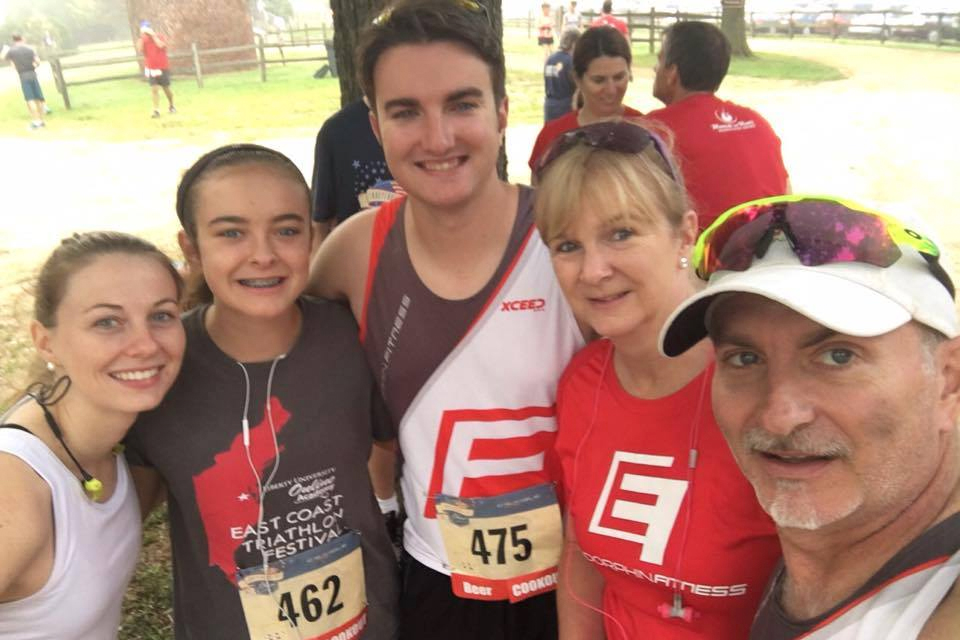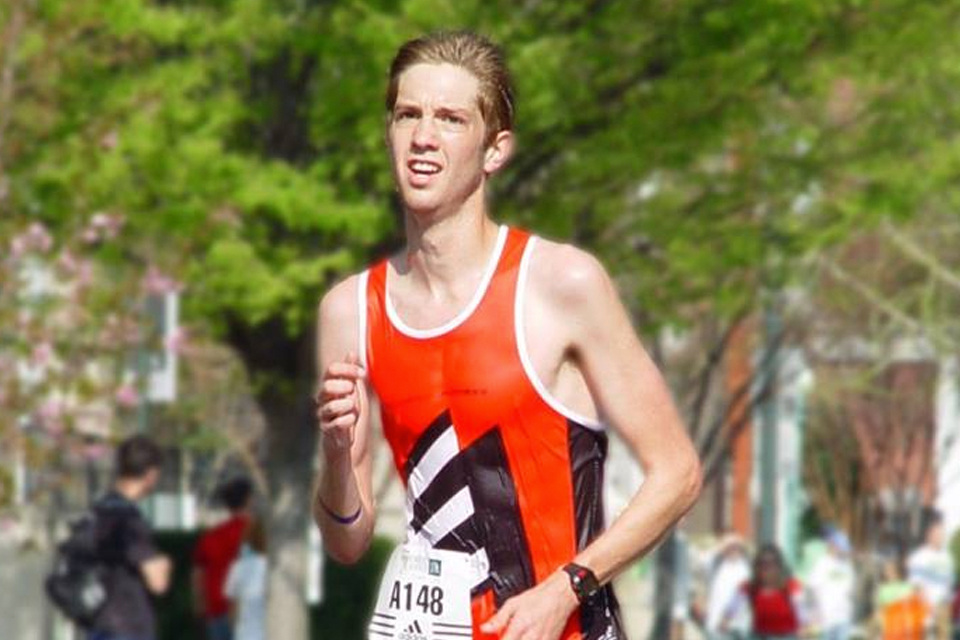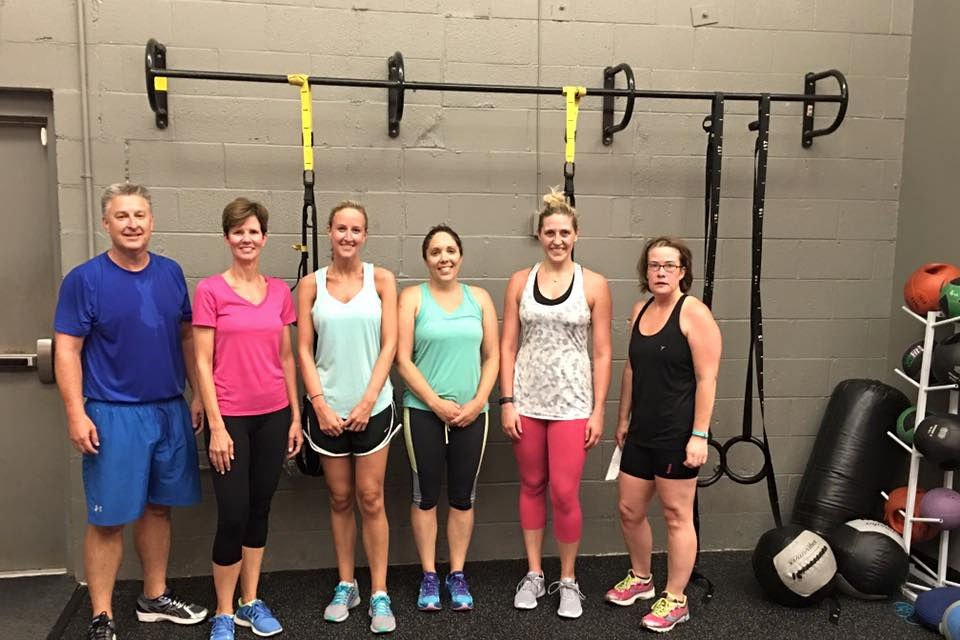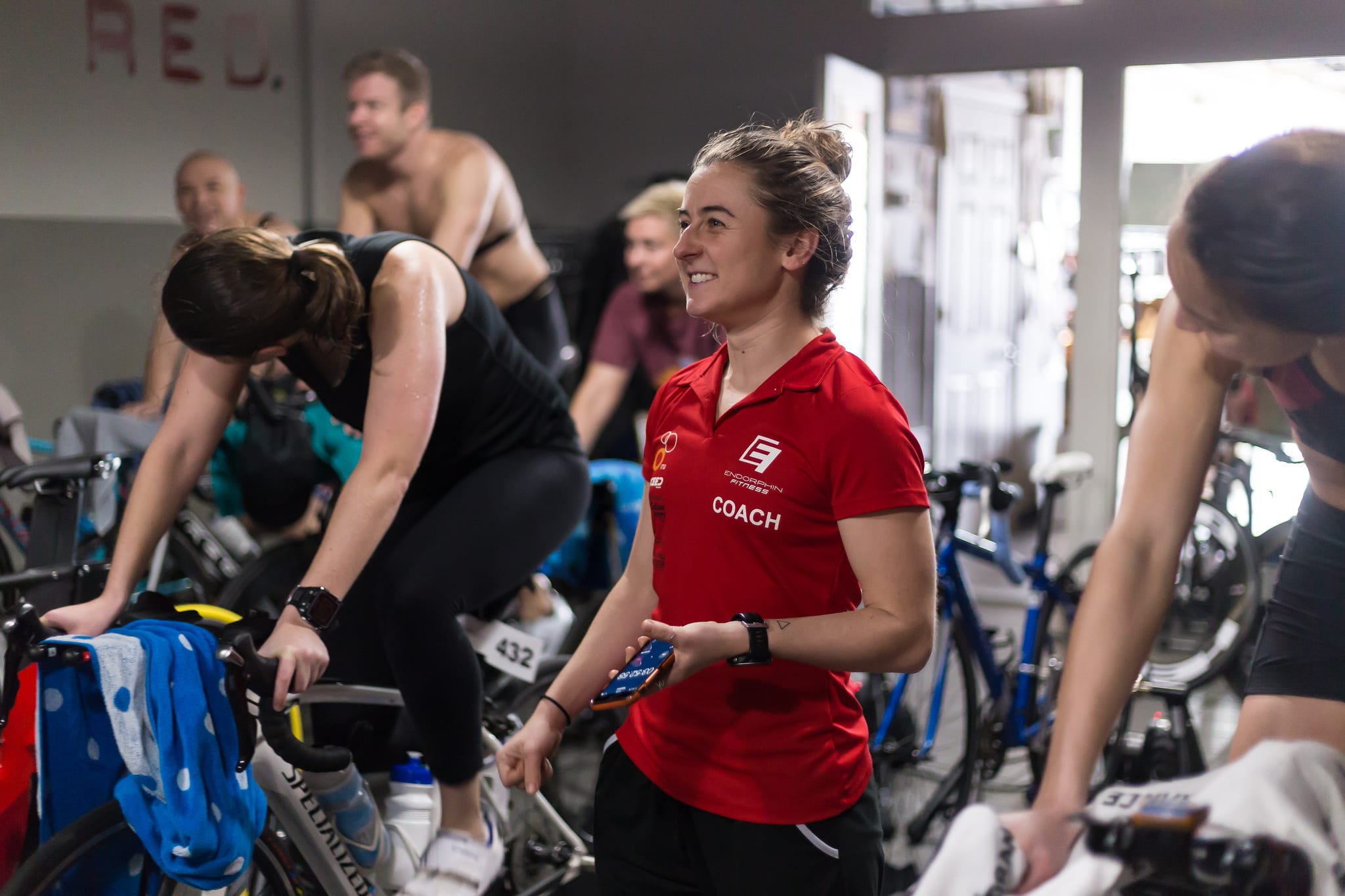

If you’re anything like me, you’re probably annoyed when you don’t get the effort back from something that you put into it. It’s true with many things, but especially true with workouts and racing. If you’re not using proper form, you won’t be applying the force to move yourself forward with maximum efficiency, and some energy will be wasted- no good! Whatever your goals are with cycling, it’s probably safe to assume you want to move forward. Therefore technique is important to everyone.
Good technique is based on a foundation of good positioning. With good positioning, we can pedal efficiently and move forward effectively. Let’s talk about the basics of positioning.
Knees slightly bent, feet flat.
Imagine you’re looking at yourself riding a bike from the side. Run through your pedal stroke like you normally would. As you approach the bottom of your pedal stroke on either side, slow down until your leg is stopped with your crank arm roughly perpendicular to the ground. At this point, your knee should be more or less in line with your toes, and the bottom of your foot should be parallel to the ground.
The upper body should be relaxed through the entire range of the pedal stroke. You should be able to reach the handlebars comfortably- not craning your shoulders forward or crowding your legs. You want to be able to use your controls easily, which will allow us to react to road conditions and stay in control of our bike.
If you’re having trouble determining if you’re in a proper position, or if you don’t know how to make these adjustments, you’re in luck! We have a bike fitter on staff, Andrew Wolak, who has over 13 years of experience fitting cyclists of all ages and abilities. He can consult on your fit position or work with you for an entire fit from head to toe. To inquire, email him here.
Now that you’re fit perfectly, let’s discuss some drills and their benefits.
Power Phase
First, a word on what a “power phase” is. Everyone has a power phase even if you don’t have a power meter to read the power numbers back to you! The power phase is simply the range of the pedal stroke which generates force that moves you forward. Imagine you’re pedaling in a clockwise motion. Most average cyclists will be generating power from roughly the 1 o’clock to 3 o’clock positions- only about a fourth of the stroke. However, with practice and some drill work, you can generate power from the 11 o’clock position all the way down to 6 o’clock! That’s more than half of the pedal stroke, and a longer period to generate power.
There are two drills we’re going to discuss today to improve that power phase.
One Legged Drill
This drill helps us to practice maintaining even power through the entire pedal stroke. By only using one leg to pedal (while clipped in) we engage new muscles and train our muscles during normal pedal strokes to engage all the way through.
There are two variants you can practice with this drill. The first is safer to do when you’re outside, but you can also practice it on the trainer. You’ll leave both feet clipped in, but only focus on driving power through one leg. You can leave the other leg unweighted, but keep it clipped in for safety and stability riding outside.
If you’re riding inside on a trainer, or you’ve had some practice, you can do a true one legged drill. By completely leaving your clip and resting one leg on the trainer, or holding it out to the side, you’ll truly only be using one leg to drive the pedal stroke. Push all the way through the power phase from noon to 6 on the clock then pull up lightly to complete the pedal stroke.
With either drill, you’ll want to focus on pushing down through the entire pedal stroke and maintain power all the way through with no dead space. Dead space is a clunk which results from a region in the stroke which you’re not generating power. When you start again, the sudden engagement of turning the pedals will make a “clunk” sound.
Cadence drills
Effective and efficient cadence lies between 90 and 95 revolutions per minute. At this cadence, your muscles will contract and operate most efficiently. Even if 70 RPM feels good to you, you want to be at 90-95! We train this by again over-exaggerating the practice to make the actual execution feel more natural in the 90-95 range.
For a cadence drill, pedal up to 110-115 RPM. However, while doing this, you have absolutely got to focus on staying engaged through the whole pedal stroke and not bouncing in your saddle! By keeping your form solid, you will effectively train this higher cadence. It will teach your muscles to fire rapidly and feel natural at this speed.
On the flip side, though, we can also practice at a low cadence. By pushing the same power at a lower cadence, we develop muscular strength and control. Again, it is important to focus on engaging all the way through the pedal stroke, and keeping your upper body relaxed and your form good.
Technique
These are a few good drills to improve your pedaling technique and keep your form solid on the bike. If you are having trouble or don’t know if you’re putting these into practice well, feel free to email me at [email protected] to set up a technique analysis in a private session! We’ll work through every aspect of your pedal stroke and make video recordings we can evaluate together to get your stroke and technique dialed in.





